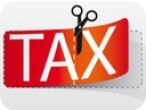Aug 15, 2024
Harris vs Trump: Key Economic Policies You Must Understand
TaxesHarris vs Trump: Key Economic Policies You Must Understand
Harris vs Trump: Key Economic Policies You Must Understand
As the 2024 Presidential Election looms, the economic policies proposed by Vice President Kamala Harris and former President Donald Trump are at the forefront of political debates. With both aiming to tackle economic challenges, including inflation, its crucial to understand their respective approaches. Here, we break down some key points of Harris and Trump's economic plans, offering insights that could directly impact your financial decisions.
Kamala Harris's Economic Policies
Vice President Kamala Harris brings a progressive approach to her economic agenda, prioritizing social welfare, clean energy, and equity. Here are some significant aspects of her policies:
- Enhanced Social Welfare: Harris supports broadening social safety nets through expanded healthcare access, education funding, and housing assistance to improve the overall quality of living for low and middle-income families.
- Clean Energy Investment: A cornerstone of Harriss plan is the investment in renewable energy sources. This includes substantial funding for solar and wind energy projects and incentives for businesses and homeowners to adopt eco-friendly technologies.
- Tax Reforms: Harris advocates for a more progressive tax system. This would involve higher taxes on the wealthy and corporations to fund social programs and reduce income inequality.
- Inflation Management: Harris proposes tackling inflation by addressing its root causes, such as supply chain disruptions and healthcare costs, rather than merely controlling interest rates.
- Workforce Development: Harriss policies focus on comprehensive workforce development, with investments in vocational training and educational programs to prepare workers for future job markets, particularly in technology and renewable energy sectors.
Donald Trump's Economic Policies
Former President Donald Trumps economic strategies emphasize deregulation, tax cuts, and energy independence. Here are key elements of his economic vision:
- Tax Cuts: Trump plans to extend and expand the tax cuts introduced during his previous administration, aimed at increasing disposable income for individuals and promoting corporate growth.
- Deregulation: A significant aspect of Trumps economic policy is reducing government regulations on businesses to spur economic growth and increase competitiveness.
- Trade Policies: Trump aims to renegotiate trade deals he deems unfavorable, impose tariffs to protect American industries, and bring back jobs outsourced to other countries.
- Energy Independence: Trumps approach includes bolstering fossil fuel production, including oil and natural gas, to reduce dependency on foreign energy sources and create domestic jobs.
- Inflation Control: Trumps plan to manage inflation centers on tax cuts and deregulation, arguing that boosting economic productivity will naturally curb inflationary pressures.
Ultimately, the choice between Harriss progressive and equity-focused economic plan and Trumps pro-business, deregulation agenda represents a significant decision for American voters. Each has its merits and potential drawbacks, depending on your financial situation and long-term goals.
How to Save on Taxes and Plan for the Future
Regardless of who wins the election, tax planning and financial strategies are critical to safeguarding your financial future. That's why it's essential to understand how you can save on taxes and optimize your investments. Set up a call with our team to discuss personalized tax-saving strategies and investment plans tailored to your needs. Our experts can offer valuable insights to navigate the complexities of the changing economic landscape.
Click the button below to learn more about how we can help you optimize your finances and secure your financial future:
Stay connected
Schedule a free consultation to discuss your goals with an expert
Subscribe
The Tax Bloke
Subscribe to learn about new product features, the latest in technology, solutions, and updates.
Resources
Read further
Discover our Podcast
Our expert guests provide valuable insights, tips, and advice, as well as engaging stories and thought-provoking discussions that will leave you with a newfound appreciation and understanding of business.



Join our Community
Discover useful tax saving strategies and advice from experts and fellow members. Our FREE community resources and support help you boost your tax savings, allowing you to retain more of your hard earned money for your family.